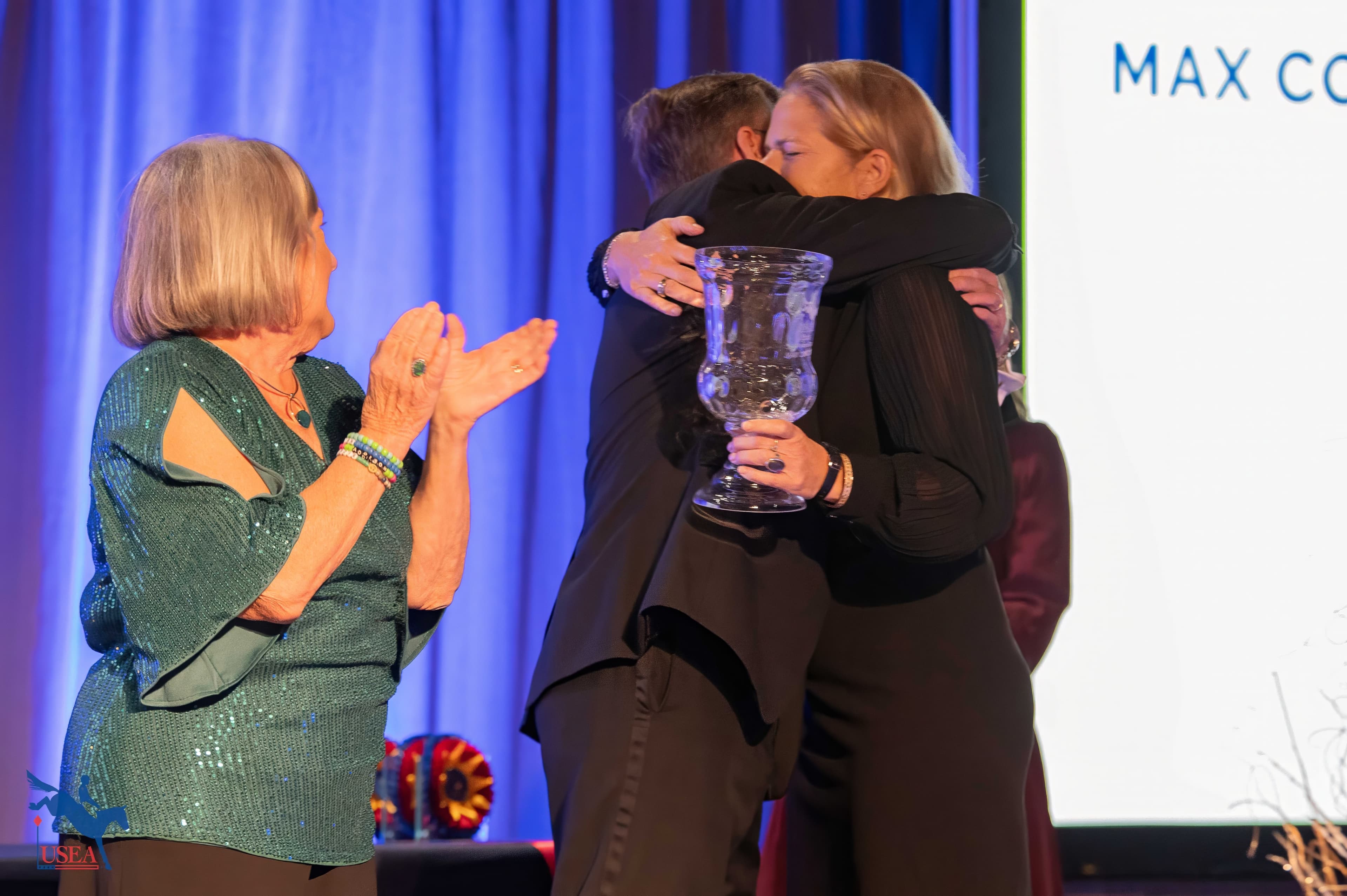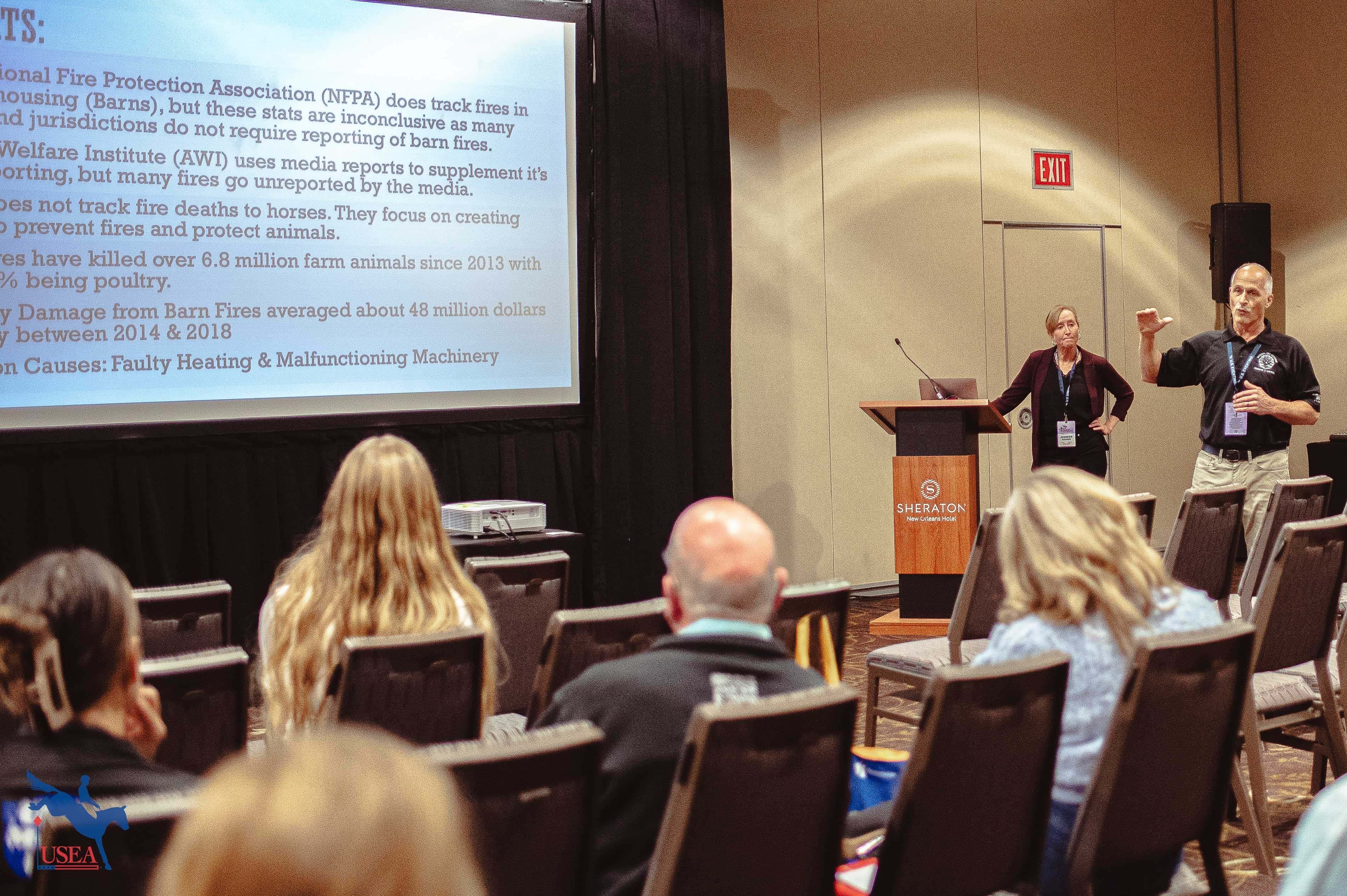Your Ex-Race Horse . . . This is How it Begins.
The day starts at the crack of dawn, as buckets are filled with oats and the hay is piled high as soft nickers trickle their way down each stall. There’s always a big pot of coffee brewing and the sweet mix of its aroma along with the heavy scent of leather hangs through the air. Everyone is waking up, stretching and yawning and as in most racing stables, looking forward to what lies ahead.
I grab my tack and pass through the office, and as I do I have their eyes looking down on me. So many photos . . . black and white irreplaceable photos of past winners, their grooms and beaming faces smiling at anyone who passes near. In one photo, stands HRH Queen Elizabeth wearing the lovely fashion of the 1960’s with lilac colored gloves as she holds a large silver cup in the Winner’s Circle. I go through my usual routine each time I pass, repeating their names to myself – El Senor, Decidedly (Kentucky Derby winner), Northern Dancer (Derby and Preakness winner), Nijinski (leading Broodmare sire), Tap Shoes, Riva Ridge and I am in awe that they were once here.
Every season a fresh batch of young fillies and colts come in from the fields to be trained and prepped for their freshman year as a racehorse. In a way it’s a type of graduation where they’ve learned how to count and do their A B C’s. Now, playtime is over and it is time to get serious. By 2 years of age, the Thoroughbred is very advanced in their training and handling compared to the average horse. They’ve become accustomed to wearing full tack, how to be groomed and bathed daily, being tied and exercised on a hot walker, adjusting how to walk, trot, canter and gallop, exiting from the start gate and eventually leaving home on a big semi. It all has its place and time in the education and future success of each Thoroughbred on the farm, and if they’re lucky enough, they may even one day have their photo placed on the wall along with the others.
Each person involved has a particular ‘duty’ in handling the horses and the horses are very aware of it. I compare it to a pit crew at a car race, where there is a set routine and generally a time allotted to each horse. I’ve always told people that Thoroughbred horses are creatures of ‘habit’, where they become accustomed to the daily schedule, and this is something one needs to understand when working with them whether at the track or in transition to become a show horse.
We always tack up in the stalls, putting the bridles over the halters, smoothing out the saddlecloths and lightly cinching the girth. A groom tacks the horse and then the hot walker person holds the horse as I get a leg up. Mounting blocks are never used, as the routine is to be as similar to what the horses will experience once at the track.
Every moment around the youngster is a learning experience for them. I always support myself over the horse’s withers during the leg-up and then gently lower myself. I never flop down or smack my legs against the girth area after getting legged up. We talk a lot to the horses in a low tone, rub their necks and make them feel safe. The hot walker person then circles me around in the stall until the horse relaxes through the spine and accepts my lower leg at the girth. With the thin exercise saddles on, you can easily feel the back of the horse. If you have a spine creeping in between your butt cheeks, I usually have the hot walker turn me in the stall a few times until the spine starts to relax down.
Once out of the stall, I tightened the girth (always while in the saddle), and my job as an exercise rider is to encourage the young Thoroughbred to move forward from my leg, torso and voice. In the early training stages, we stay inside the shed row for a full week prior to going out to the track and use a nice quiet lead pony a few feet in front of us to follow. The lead pony is bombproof and often settles a young Thoroughbred and gives them confidence and security. There is an occasional overactive colt feeling his oats and may bump into the rear end of the lead pony and want to play. This is when I nudge them forward, keeping my hands low and soft and clucking them on. Training a young racehorse to concentrate and develop a solid work ethic early on is extremely important.
We invest thorough and correct training into each horse so that once they leave the farm, they’ll have had a great start in their careers and the odds won’t be so much against them. I am also very aware that they may not make it at the track, and if I can teach the horses the proper basics early on, then they can develop into nice show horses (especially Eventers!).
The shed row has a mix of dirt and sand around the perimeter of the stalls with a tall ceiling that allows for indoor workouts. December through March is when we start to break the babies and because you can never depend upon the weather that time of year, riding around the indoor path is great. Something a lot of people don’t realize is that ex-track horses do really well in indoor arenas simply because of this early training experience of working inside.
After the colts and fillies are backed, the next step is to have the young horses moving forward at a trot, keeping a pace and getting physically conditioned. Some can be fussy with their heads or lean into your hands, while others trot happily around with ears perked. As a rider, you’ve got to not only be fit and have stamina but you also need to be versatile and aware that every horse is an individual who requires respect. By March, the training schedule has picked up quite a bit and the workload has increased, again with the intent of preparing the horses either for the track or for the sales.
After a couple days of following the lead pony, we mount outside the stalls and work our trot sets without the pony. You can notice a difference in the pace and attitude of the youngsters when their ‘security blanket’ is taken away, as they look for the lead pony and suck back from my leg.
So now we come into another phase of training, and teach independence and require the colts and fillies to really listen to what the rider is saying to them. They even need to learn what the stick means. Their usual response is with a question, such as, “Why are you tapping me with that annoying thing? I guess I’ll just slow down or stop altogether!” It’s a strange reaction that you may not expect, but in time they adjust and learn that a tap on the shoulder or behind the leg means to go faster.
Again, it takes a few days to adjust and learn to move freely forward. We will also add another colt or filly in the line up and have them work around together prior to going to the training track. It’s really interesting to see where their minds are at this moment because some become a bit competitive and want to be up front. Some will speed up in the turns and some will decide to slow down along the long side of the shed. This is when it’s helpful to follow up with the trainer and communicate what we’re feeling on top of the horse so that there is a game plan on what to watch out for once on the track.
When the rides are over, the babies are cooled out either on the hot walker or hand walked, brushed and then taken
back out to the pastures to graze and play until the next day. I gather up all the equipment and make my way back through the office to the tack room where again, I’m met with those faces staring down at me from the walls. I don’t walk too quickly through this part of the barn. Everyday when I look up at those photos, it is as if I am looking at them for the first time – I never tire of them but rather finish my day with a habit I’ve gotten myself into of repeating their names to myself, “El Senor, Decidedly, Northern Dancer, Nijinski, Tap Shoes, Riva Ridge . . . ”














